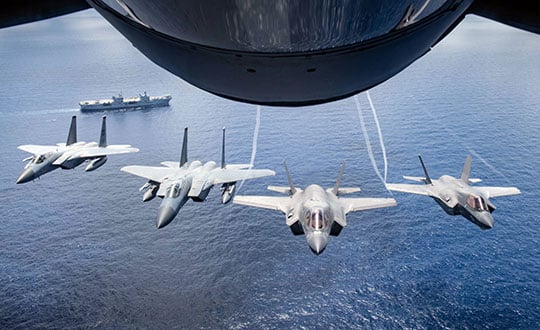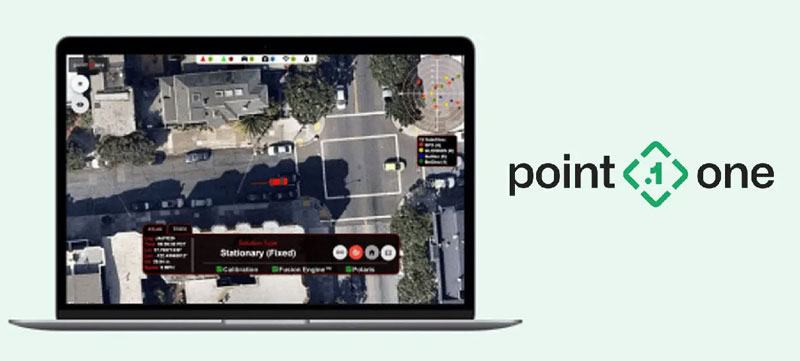Make Every Shot Count
GPS technology helped the U.S. Air Force take out al-Qaeda leader Abu Musab Al-Zarqawi in a June 8 airstrike.

An airman assembles a GBU-38 500-pound Joint Direct Attack Munition, the same weapon that destroyed Zarqawi’s safe house. Photo: US Air Force
A GBU-38 Joint Direct Attack Munition (JDAM) equipped with GPS guidance was one of the two munitions used in the bombing of Zarqawi’s safe house outside the city of Baqouba, 30 miles northeast of Baghdad.
Air Force Space Command delivered space combat effects for the precision strike that resulted in the death of Zarqawi, said Brigadier General Donald Alston, director of Air and Space Operations.
“Once again, GPS-aided munitions played a significant role in the success of an important operation,” he said. “When you’re after an elusive, high-value target, you’ve got to make every shot count.”
Alston said the military is depending on satellite technology like GPS more than ever in conducting the war in Iraq. “GPS provides the precision timing and navigation absolutely instrumental in both protecting our troops on the ground and taking out the bad guys.” Alston recently returned from Iraq as the Multinational Force-Iraq Director of Communications.
In the attack, a single F-16 fighter jet fired two precision-guided 500-pound munitions sequentially, first a laser-guided GBU-12 and then a GPS-guided GBU-38. The GBU-38 is a traditional gravity bomb, which in this case had an added tail kit — the JDAM —with a GPS guidance package to increase both range and accuracy.
JDAM: Military’s Smart Choice
Since its debut in 1999, the Joint Direct Attack Munition, or JDAM, has been used more than 15,000 times.
JDAM is a tail kit that turns an unguided dumb munition into an accurate smart bomb. With a range of about 15 nautical miles, the autonomous JDAM can be released from almost every aircraft in the Air Force and Navy inventory from a low or high altitude in almost any type of weather. Once in the air, the weapon uses GPS and inertial navigation to find its target.
In 1991, the United States used much less accurate, unguided munitions during Operation Desert Storm. The few laser-guided weapons used were only effective in near-perfect weather and were very expensive, at $120,000 apiece. After the conflict, research and development of an “adverse-weather precision-guided munition” began.
In 1995, McDonnell Douglas, which later merged with Boeing, was chosen to develop the low-cost JDAM. The first JDAMs were delivered in 1997 with operational testing conducted in 1998 and 1999. More than 450 JDAMs were dropped during testing, recording an unprecedented 95 percent system reliability while achieving a 9.6-meter accuracy rate. JDAM performance has been demonstrated in operationally representative tests including drops through clouds, rain and snow.
As a result, the Air Force and Navy ordered 87,000 tail kits at $18,000 a piece, which has since increased to more than 200,000 units because of the weapon’s affordable price and operational success. The first international sale was made to Israel in 2000. Since then, 12 additional international customers have purchased JDAMs.
The JDAM was first used during Operation Allied Force in the Balkans in 1999. In Operation Enduring Freedom in Afghanistan, B-52 Stratofortresses loaded with 2,000-pound JDAM-equipped bombs provided close air support in addition to their regular missions. In Operation Iraqi Freedom, warfighters first used the smaller 500-pound version of the weapon, which has allowed its use in urban environments.
Tail Kit. The JDAM tail kit includes adjustable tail fins, a control computer, an inertial guidance system, and a GPS receiver. Before dropping a bomb, the aircraft uses its own GPS receiver to pinpoint particular targets on the ground. Just before releasing the bomb, the aircraft’s computer feeds the bomb’s computer its current position and velocity vectors and the GPS coordinates of the target.
In the air, the JDAM’s GPS receiver updates the weapon’s trajectory all the way to impact, adjusting the flight fins to “steer” the bomb to the target coordinates. Target coordinates can be loaded into the aircraft before takeoff, manually altered by the aircrew before weapon release, or automatically entered through target designation with onboard aircraft sensors.
When GPS data is available, the JDAM system is accurate to within 40 feet during free flight, generally hitting within a few feet of the target.
Retasking. The pilots who struck Zarqawi’s safe house were in the air on a sortie in support of ground forces and were retasked while in flight. This “rapidly changing battlespace” demands agile forces that can deliver lethal effects before an enemy can move, Alston explained. “GPS is essential to success in this challenging environment.”
General Kevin P. Chilton assumed command of Air Force Space Command on June 27, succeeding General Lance W. Lord who retired April 1.
Manufacturers
Boeing produces the JDAM kits, with Rockwell Collins providing the GPS receiver and Honeywell Inc. supplying the inertial measurement unit.





















Follow Us